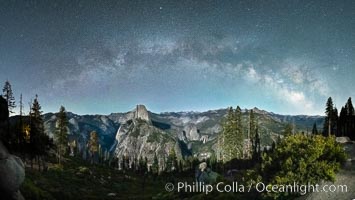
The Milky Way arches over Half Dome and the Yosemite High Country. Each year there are a couple nights where the Milky Way arches perfectly over Half Dome and the faint light of the milky way is perfectly balanced with a partial moon. I try to shoot this image each year, partly to improve upon past renditions but also simply to sit alone at night atop Glacier Point and savor the view.
Location: Yosemite National Park, California
Image ID: 37132
Panorama dimensions: 5241 x 9296
Location: Yosemite National Park, California
Image ID: 37132
Panorama dimensions: 5241 x 9296
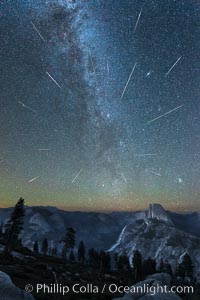
Perseid Meteor Shower and Milky Way, Andromeda Galaxy and the Pleides Cluster, over Half Dome and Yosemite National Park.
Location: Glacier Point, Yosemite National Park, California
Image ID: 28746
Location: Glacier Point, Yosemite National Park, California
Image ID: 28746
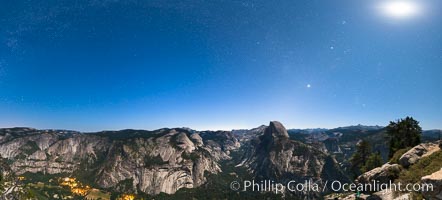
Half Dome and nighttime stars, viewed from Glacier Point.
Location: Glacier Point, Yosemite National Park, California
Image ID: 27951
Panorama dimensions: 4761 x 10519
Location: Glacier Point, Yosemite National Park, California
Image ID: 27951
Panorama dimensions: 4761 x 10519
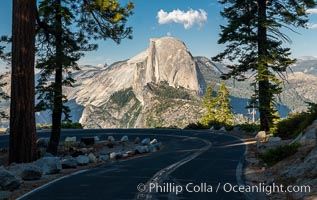
Half Dome and the Glacier Point Road, Yosemite National Park.
Location: Yosemite National Park, California
Image ID: 36380
Location: Yosemite National Park, California
Image ID: 36380
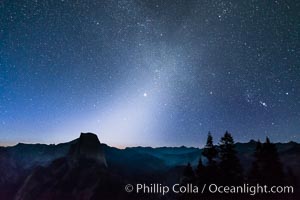
Zodiacal Light and planet Jupiter in the northeastern horizon, above Half Dome and the Yosemite high country.
Location: Glacier Point, Yosemite National Park, California
Image ID: 28745
Location: Glacier Point, Yosemite National Park, California
Image ID: 28745
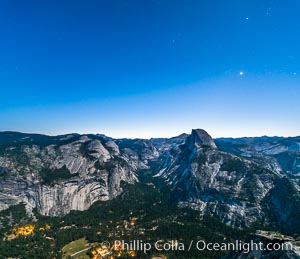
Half Dome and nighttime stars, viewed from Glacier Point.
Location: Glacier Point, Yosemite National Park, California
Image ID: 27952
Location: Glacier Point, Yosemite National Park, California
Image ID: 27952
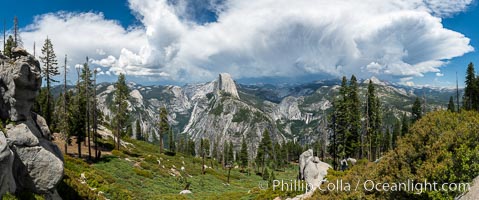
Thunderstorm Forming over Half Dome and the Yosemite High Country, from Glacier Point, Yosemite National Park.
Location: Yosemite National Park, California
Image ID: 36362
Panorama dimensions: 7209 x 21430
Location: Yosemite National Park, California
Image ID: 36362
Panorama dimensions: 7209 x 21430
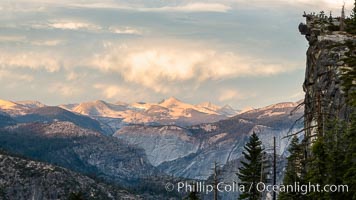
Sunset over the Yosemite High Country, people on the precipice at Glacier Point, Yosemite National Park.
Location: Yosemite National Park, California
Image ID: 36394
Location: Yosemite National Park, California
Image ID: 36394
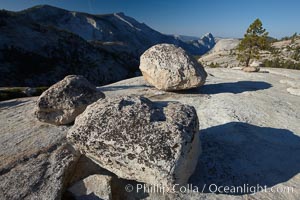
Glacial erratic boulders atop Olmsted Point, with the massive granite monoliths Half Dome and Clouds Rest in the background. Erratics are huge boulders left behind by the passing of glaciers which carved the granite surroundings into their present-day form. When the glaciers melt, any boulders and other geologic material that it was carrying are left in place, sometimes many miles from their original location.
Location: Yosemite National Park, California
Image ID: 23264
Location: Yosemite National Park, California
Image ID: 23264
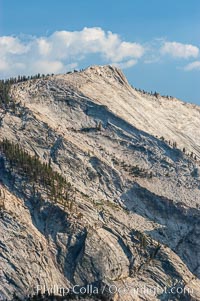
Clouds Rest viewed from Olmsted Point. Clouds Rest is one of the most massive -- if not the singlemost massive -- granite monoliths in the world. A vast lobe of Mesozoic-era granodiorite magma cooled to rock and was gradually uplifted to its present altitude of 9926 ft. Later, glaciers cut it into its present shape.
Location: Yosemite National Park, California
Image ID: 09965
Location: Yosemite National Park, California
Image ID: 09965
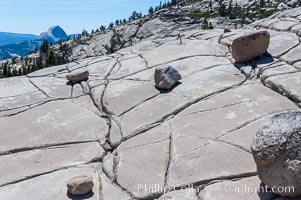
Glacial erratics atop Olmsted Point. Erratics are huge boulders left behind by the passing of glaciers which carved the granite surroundings into their present-day form.
Location: Yosemite National Park, California
Image ID: 09966
Location: Yosemite National Park, California
Image ID: 09966
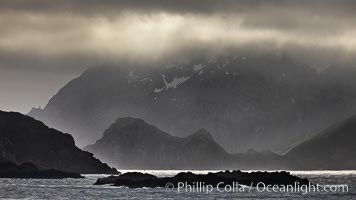
South Georgia Island coastline, showing the island's characteristic rugged topography. 56% of the island is covered by 161 glaciers, which have created numerous large bays and inlets that provide excellent habitat for marine animals and seabirds. Mountains meet the sea in steep-sided seacliffs covered with sparse vegetation. The highest point on South Georgia Island is Mt. Paget at 2,915m.
Location: South Georgia Island
Image ID: 24317
Location: South Georgia Island
Image ID: 24317
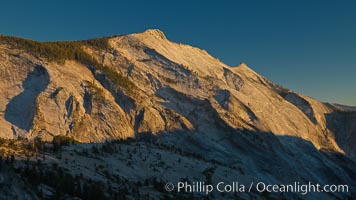
Cloud's Rest at sunset, viewed from Olmsted Point. Clouds Rest is one of the most massive -- if not the singlemost massive -- granite monoliths in the world. A vast lobe of Mesozoic-era granodiorite magma cooled to rock and was gradually uplifted to its present altitude of 9926 ft. Later, glaciers cut it into its present shape.
Location: Yosemite National Park, California
Image ID: 25761
Location: Yosemite National Park, California
Image ID: 25761
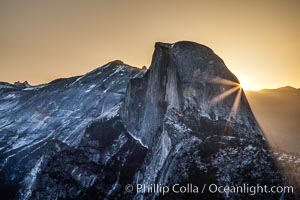
Half Dome at sunrise, viewed from Glacier Point.
Location: Yosemite National Park, California
Image ID: 27737
Location: Yosemite National Park, California
Image ID: 27737
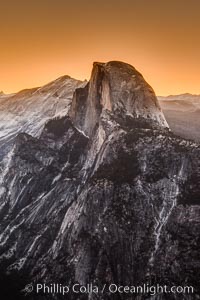
Half Dome and pre-dawn light, sunrise, viewed from Glacier Point.
Location: Yosemite National Park, California
Image ID: 27739
Location: Yosemite National Park, California
Image ID: 27739
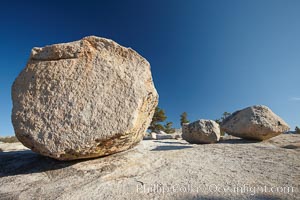
Glacial erratic boulders atop Olmsted Point. Erratics are huge boulders left behind by the passing of glaciers which carved the granite surroundings into their present-day form. When the glaciers melt, any boulders and other geologic material that it was carrying are left in place, sometimes many miles from their original location.
Location: Yosemite National Park, California
Image ID: 23265
Location: Yosemite National Park, California
Image ID: 23265
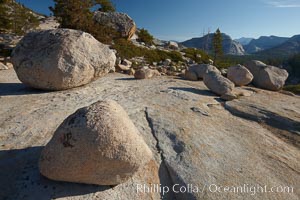
Glacial erratic boulders atop Olmsted Point. Erratics are huge boulders left behind by the passing of glaciers which carved the granite surroundings into their present-day form. When the glaciers melt, any boulders and other geologic material that it was carrying are left in place, sometimes many miles from their original location.
Location: Yosemite National Park, California
Image ID: 23279
Location: Yosemite National Park, California
Image ID: 23279
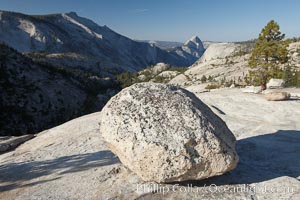
Glacial erratic boulder atop Olmsted Point, with the massive granite monoliths Half Dome and Clouds Rest in the background. Erratics are huge boulders left behind by the passing of glaciers which carved the granite surroundings into their present-day form. When the glaciers melt, any boulders and other geologic material that it was carrying are left in place, sometimes many miles from their original location.
Location: Yosemite National Park, California
Image ID: 23280
Location: Yosemite National Park, California
Image ID: 23280
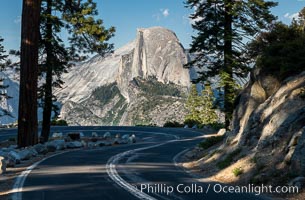
Half Dome and the Glacier Point Road, Yosemite National Park.
Location: Yosemite National Park, California
Image ID: 36379
Location: Yosemite National Park, California
Image ID: 36379
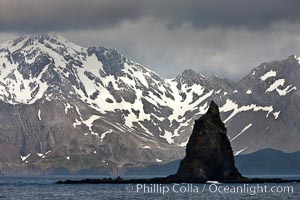
South Georgia Island coastline, showing the island's characteristic rugged topography. 56% of the island is covered by 161 glaciers, which have created numerous large bays and inlets that provide excellent habitat for marine animals and seabirds. Mountains meet the sea in steep-sided seacliffs covered with sparse vegetation. The highest point on South Georgia Island is Mt. Paget at 2,915m.
Location: South Georgia Island
Image ID: 24321
Location: South Georgia Island
Image ID: 24321
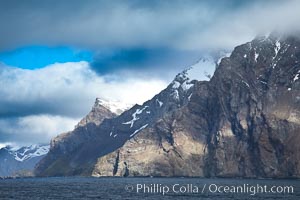
South Georgia Island coastline, showing the island's characteristic rugged topography. 56% of the island is covered by 161 glaciers, which have created numerous large bays and inlets that provide excellent habitat for marine animals and seabirds. Mountains meet the sea in steep-sided seacliffs covered with sparse vegetation. The highest point on South Georgia Island is Mt. Paget at 2,915m.
Location: South Georgia Island
Image ID: 24322
Location: South Georgia Island
Image ID: 24322
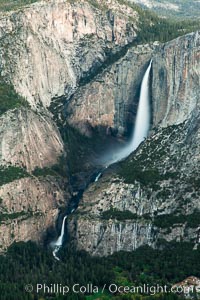
Yosemite Falls viewed from Glacier Point, spring.
Location: Yosemite Falls, Yosemite National Park, California
Image ID: 27740
Location: Yosemite Falls, Yosemite National Park, California
Image ID: 27740
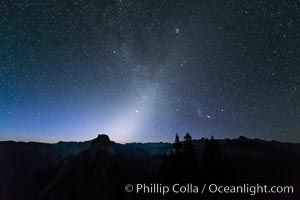
Zodiacal Light and planet Jupiter in the northeastern horizon, above Half Dome and the Yosemite high country.
Location: Glacier Point, Yosemite National Park, California
Image ID: 28743
Location: Glacier Point, Yosemite National Park, California
Image ID: 28743
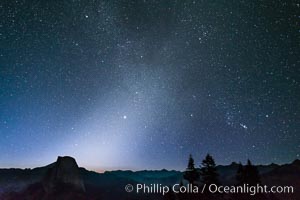
Zodiacal Light and planet Jupiter in the northeastern horizon, above Half Dome and the Yosemite high country.
Location: Glacier Point, Yosemite National Park, California
Image ID: 28744
Location: Glacier Point, Yosemite National Park, California
Image ID: 28744
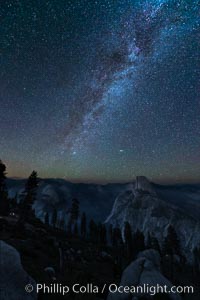
Perseid Meteor Shower and Milky Way, over Half Dome and Yosemite National Park.
Location: Glacier Point, Yosemite National Park, California
Image ID: 28747
Location: Glacier Point, Yosemite National Park, California
Image ID: 28747
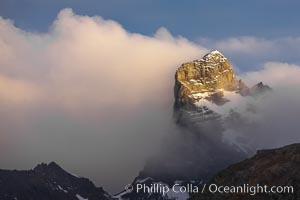
South Georgia Island, spire and sunset clouds, showing the island's characteristic rugged topography. 56% of the island is covered by 161 glaciers, which have created numerous large bays and inlets that provide excellent habitat for marine animals and seabirds. Mountains meet the sea in steep-sided seacliffs covered with sparse vegetation. The highest point on South Georgia Island is Mt. Paget at 2,915m.
Location: Right Whale Bay, South Georgia Island
Image ID: 24328
Location: Right Whale Bay, South Georgia Island
Image ID: 24328
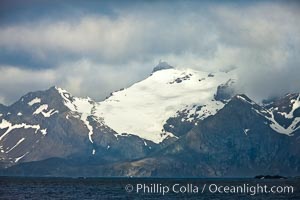
South Georgia Island coastline, showing the island's characteristic rugged topography. 56% of the island is covered by 161 glaciers, which have created numerous large bays and inlets that provide excellent habitat for marine animals and seabirds. Mountains meet the sea in steep-sided seacliffs covered with sparse vegetation. The highest point on South Georgia Island is Mt. Paget at 2,915m.
Location: South Georgia Island
Image ID: 24342
Location: South Georgia Island
Image ID: 24342
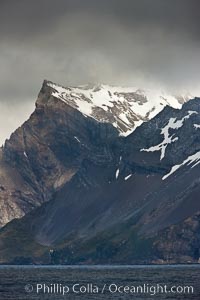
South Georgia Island coastline, showing the island's characteristic rugged topography. 56% of the island is covered by 161 glaciers, which have created numerous large bays and inlets that provide excellent habitat for marine animals and seabirds. Mountains meet the sea in steep-sided seacliffs covered with sparse vegetation. The highest point on South Georgia Island is Mt. Paget at 2,915m.
Location: South Georgia Island
Image ID: 24343
Location: South Georgia Island
Image ID: 24343
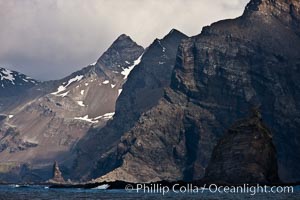
South Georgia Island coastline, showing the island's characteristic rugged topography. 56% of the island is covered by 161 glaciers, which have created numerous large bays and inlets that provide excellent habitat for marine animals and seabirds. Mountains meet the sea in steep-sided seacliffs covered with sparse vegetation. The highest point on South Georgia Island is Mt. Paget at 2,915m.
Location: South Georgia Island
Image ID: 24359
Location: South Georgia Island
Image ID: 24359
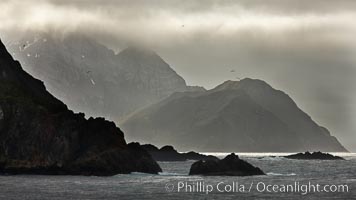
South Georgia Island coastline, showing the island's characteristic rugged topography. 56% of the island is covered by 161 glaciers, which have created numerous large bays and inlets that provide excellent habitat for marine animals and seabirds. Mountains meet the sea in steep-sided seacliffs covered with sparse vegetation. The highest point on South Georgia Island is Mt. Paget at 2,915m.
Location: South Georgia Island
Image ID: 24363
Location: South Georgia Island
Image ID: 24363